Introduction to Bayesian Analysis
Oct 2, 2022
library(tidyverse)
library(ggside)
library(hrbrthemes)
theme_set(theme_ipsum_rc())
set.seed(123)Given that you expect a landing page’s CVR to be 10%, what are the odds of getting 13/100?
ads_shown = 100
conversion = ads_shown * 0.13
n_samples = 100e3Frequentist Approach
# generate null distribution
n_converts <-
rbinom(n = n_samples, size = ads_shown, prob = 0.10)
n_converts |>
data.frame() |>
ggplot(aes(x = n_converts)) +
geom_histogram(col = "darkblue", fill = "lightblue", bins = 10) +
geom_vline(xintercept = conversion, col = "red", lty = 4) +
scale_y_comma() +
labs(x = "# Visitors", title = "Binom. Distribution")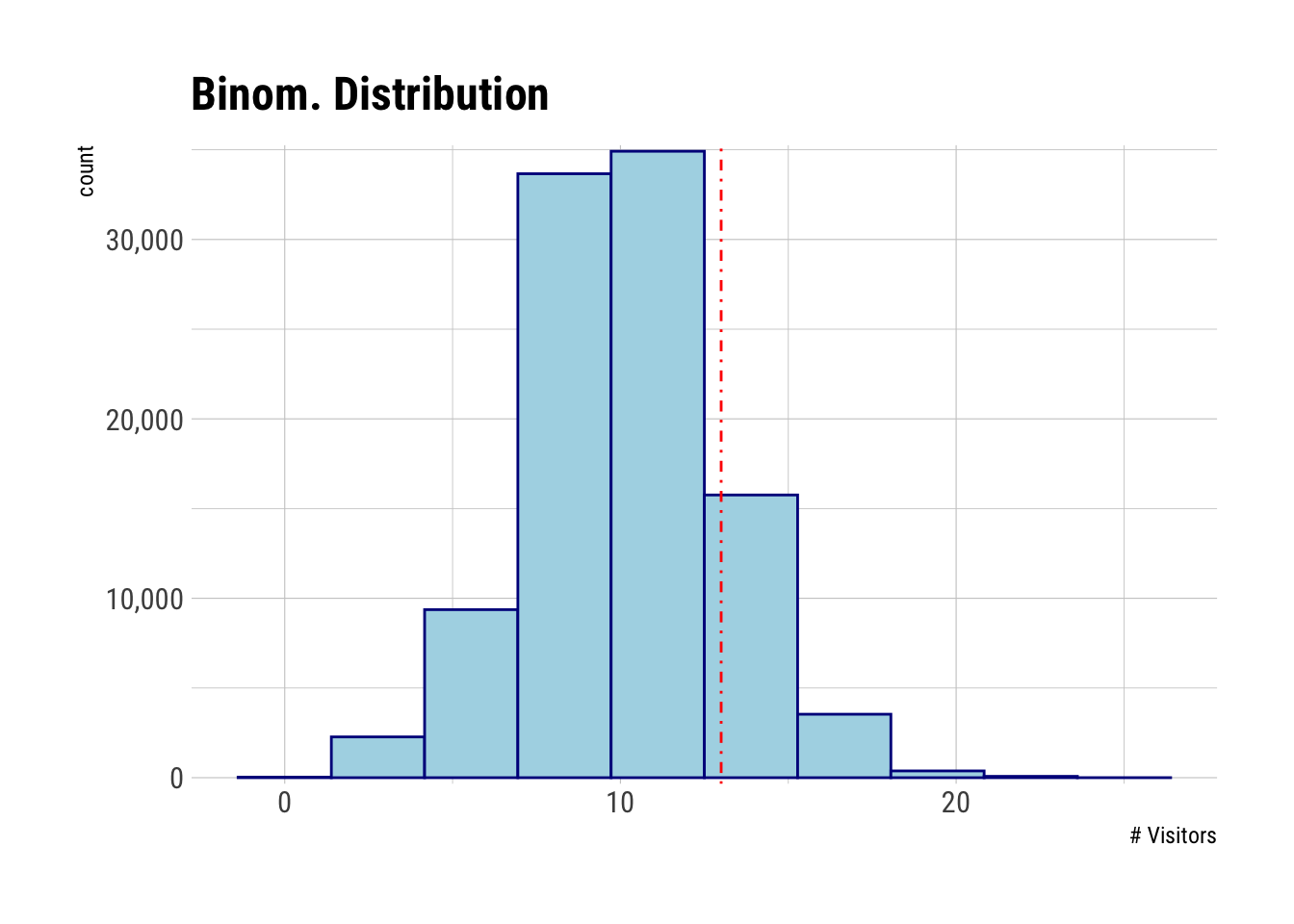
# calc prob
freq_prob <- sum(n_converts >= conversion) / length(n_converts)
freq_prob## [1] 0.19748# shortcut
1 - pbinom(conversion-1, size = ads_shown, prob = 0.10)## [1] 0.1981789Bayesian Approach
# given Bayesian way of doing, we expect a prior distribution
# assume expected CVR as a beta distribution
# params for beta distribution
ab = list(a = 11.3, b = 93.5)
prior_prop_clicks <- rbeta(n = n_samples, shape1 = ab$a, shape2 = ab$b)
prior_prop_clicks |>
density() |>
plot(
type = "h",
col = "light blue",
main = "Beta Distribution (Prior)"
)
abline(v = 0.1, col = "red")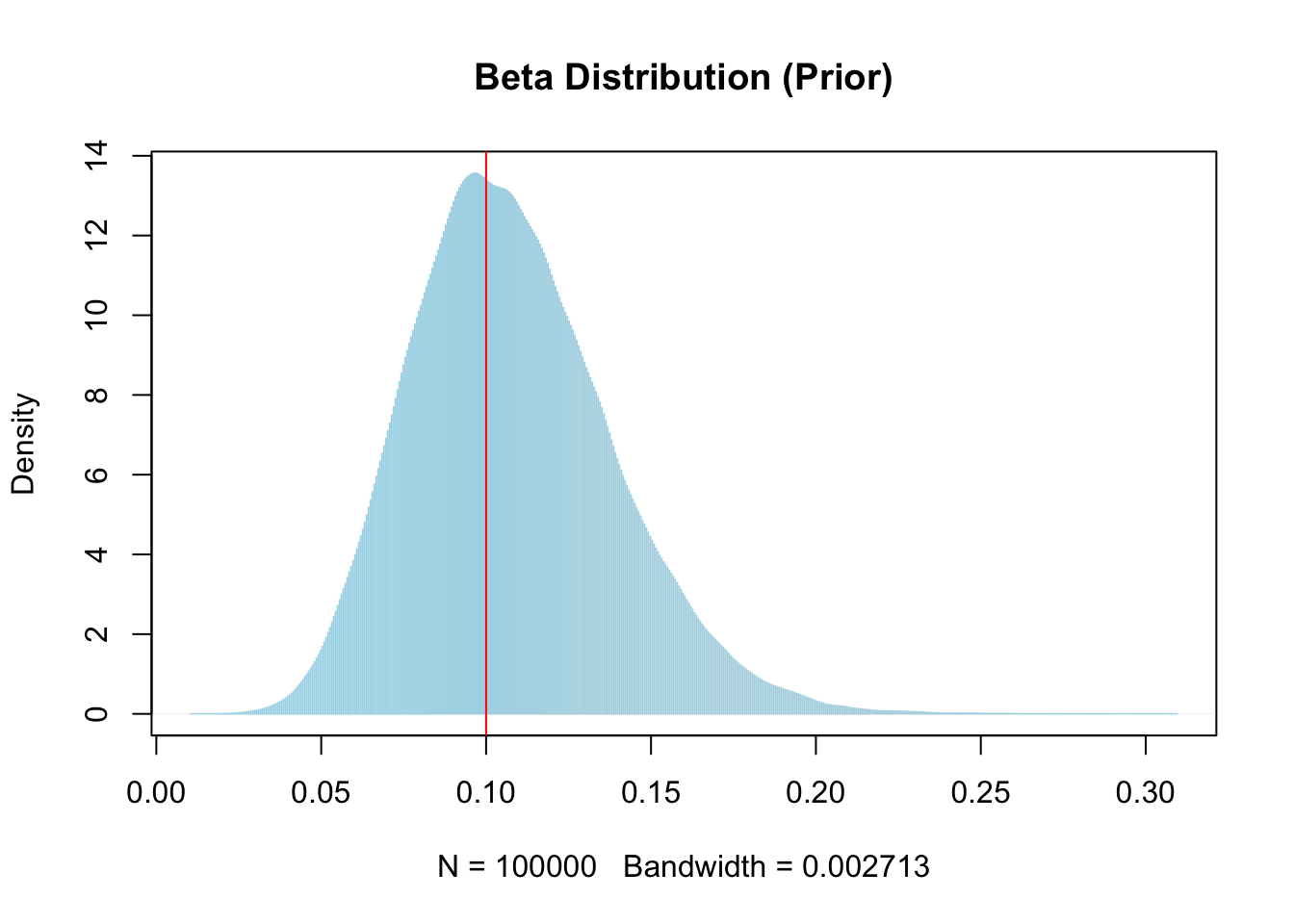
n_converts <- rbinom(n = n_samples, size = ads_shown, prob = prior_prop_clicks)
prior <- tibble(rate = prior_prop_clicks, visits = n_converts)
# visualize a joint probability distribution
prior |>
ggplot(aes(visits, rate)) +
geom_jitter(col = "lightblue", alpha = 0.05, width = 0.05) +
geom_xsidehistogram(
aes(y = stat(density)),
bins = 15,
col = "darkblue",
fill = "lightblue"
) +
geom_ysidehistogram(
aes(x = stat(density)),
bins = 15,
col = "darkblue",
fill = "lightblue"
) +
labs(title = "Joint Distribution")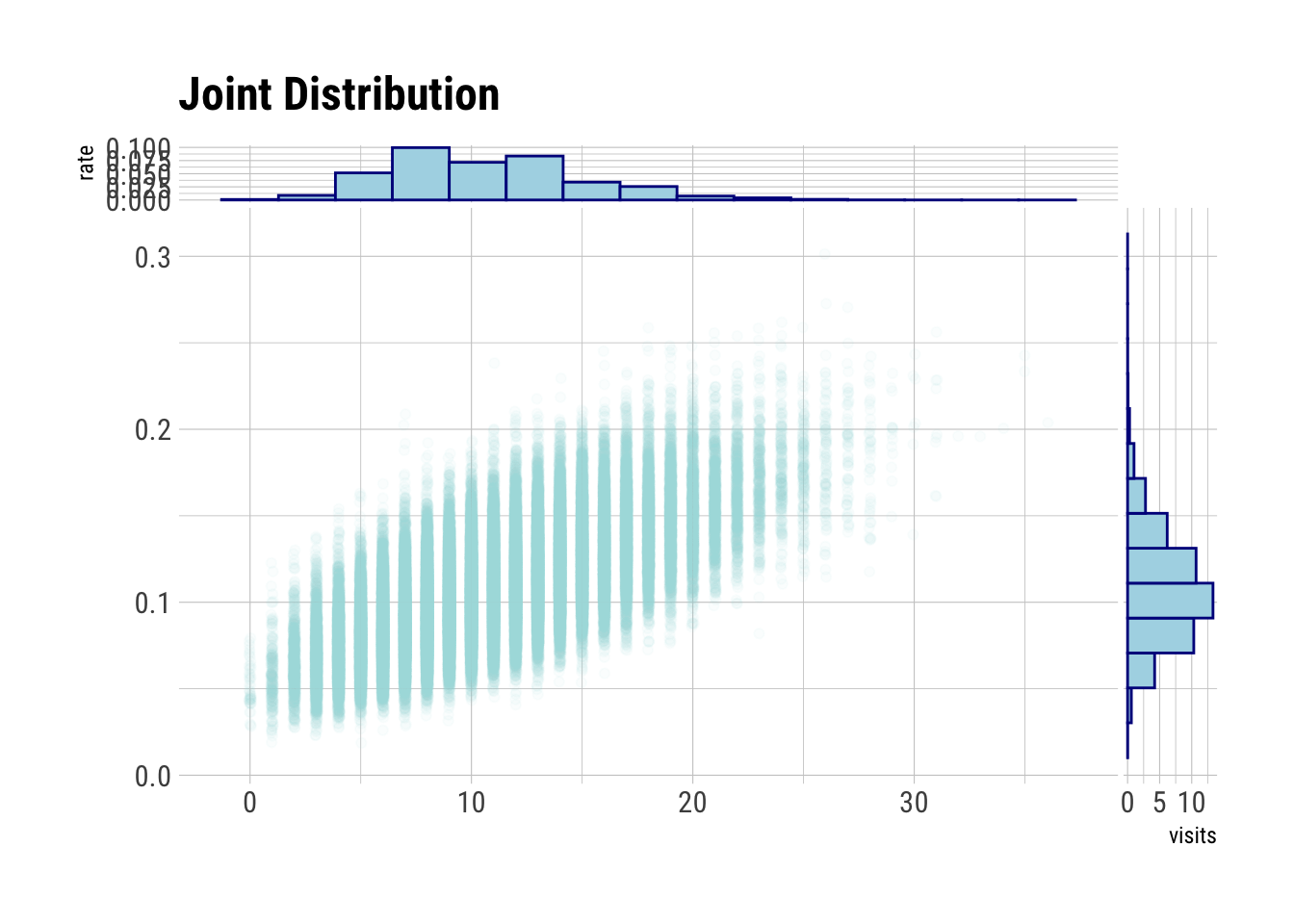
# calc prob
bayes_prob <- sum(n_converts >= conversion) / length(n_converts)
bayes_prob## [1] 0.31883prior |>
filter(visits == conversion) |>
ggplot(aes(rate)) +
geom_histogram(aes(y = ..density..),
col = "white",
fill = "lightblue",
bins = 30
) +
geom_density(col = "darkblue", size = 2) +
coord_cartesian(xlim = c(0, .5)) +
labs(title = "Posterior Distribution (New Prior)")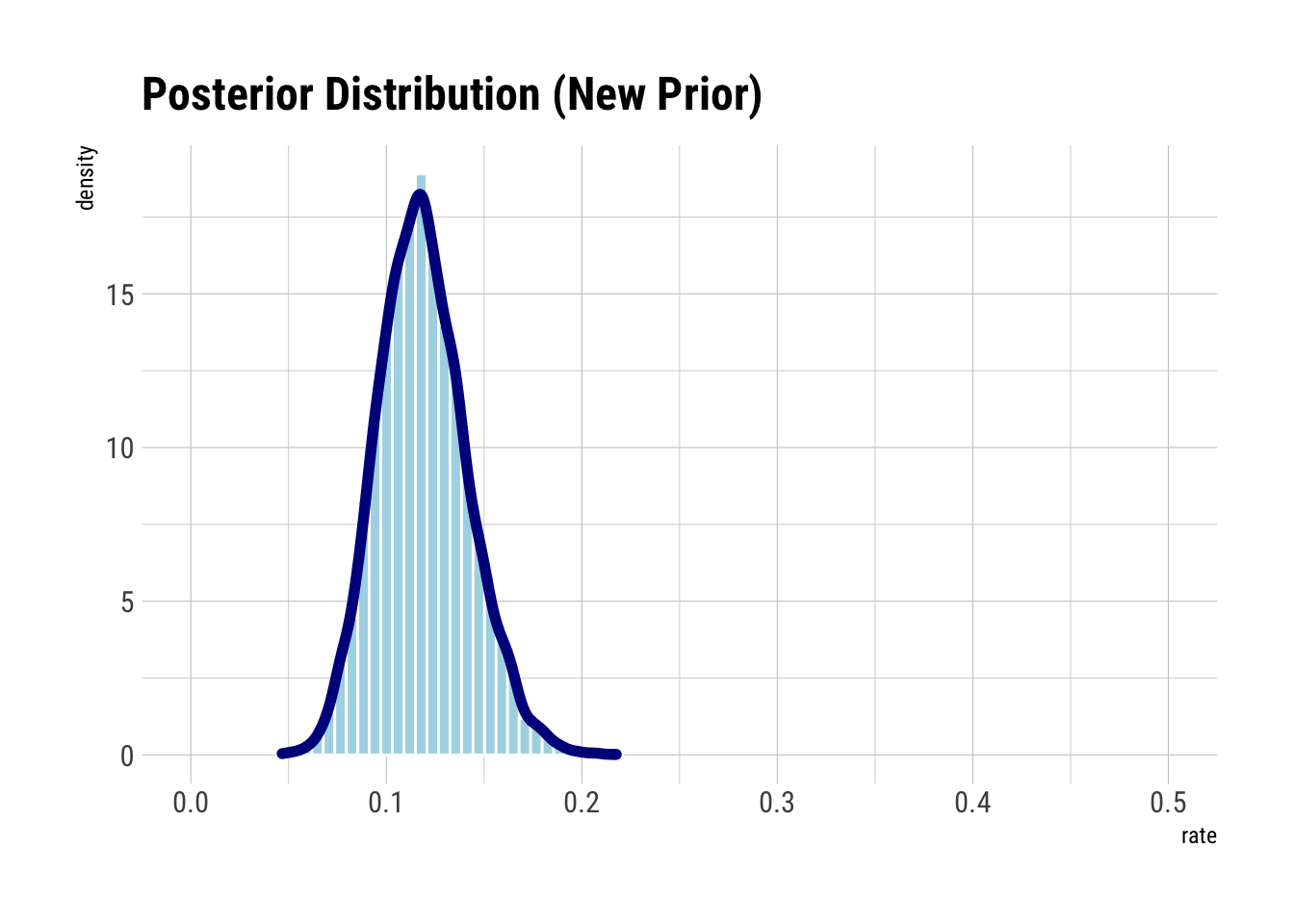
# posterior distribution can be used as a new prior
posterior <- prior |> filter(visits == conversion) |> pull(rate)
mean(posterior)## [1] 0.1186554Given its prior, Bayesian > Frequentist.
# to compare
list(
frequentist = freq_prob,
bayesian = bayes_prob
)## $frequentist
## [1] 0.19748
##
## $bayesian
## [1] 0.31883Decision Analysis
Compare cost-benefit to SEM getting 7/80. Assume SEM’s average conversion is 8% with sigma 1%. Cost for ads is $500, cost for SEM is $400.
sem_impressions = 80
sem_converts = 7
# assume prior
sem_prior_prob <- rnorm(n = n_samples, mean = 0.08, sd = 0.01)
sem_prior_prob |>
density() |>
plot(
type = "h",
col = "orange",
main = "Normal Distribution (Prior)"
)
abline(v = 0.08, col = "red")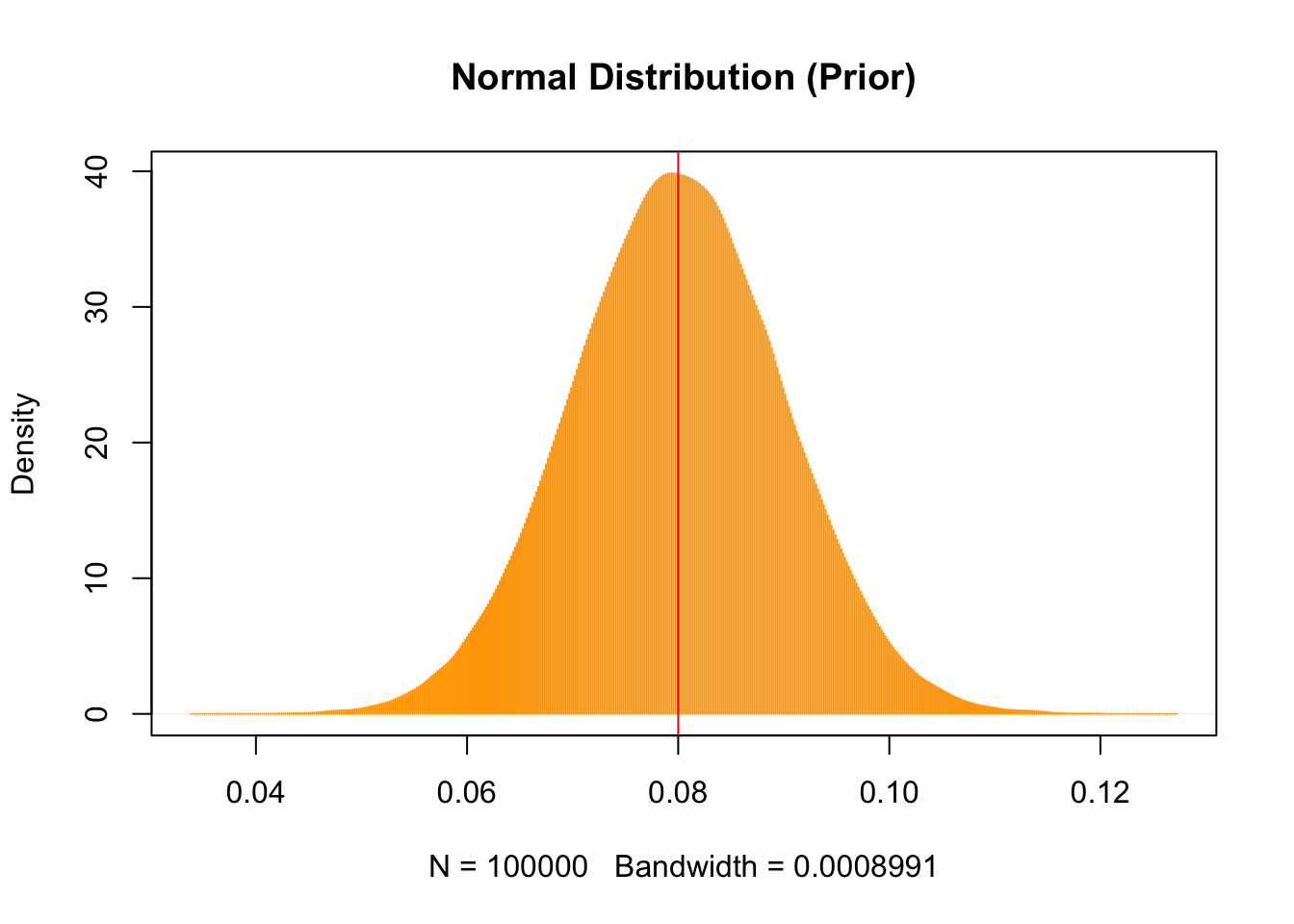
sem_prior <- rbinom(n = n_samples, size = sem_impressions, prob = sem_prior_prob)
sem_prior <- tibble(rate = sem_prior_prob, convert = sem_prior)
sem_prior |>
filter(convert == sem_converts) |>
ggplot(aes(rate)) +
geom_histogram(aes(y = ..density..),
col = "white",
fill = "orange",
bins = 30,
alpha = 0.3
) +
geom_density(col = "darkorange", size = 2) +
coord_cartesian(xlim = c(0, .5)) +
labs(title = "Posterior for SEM")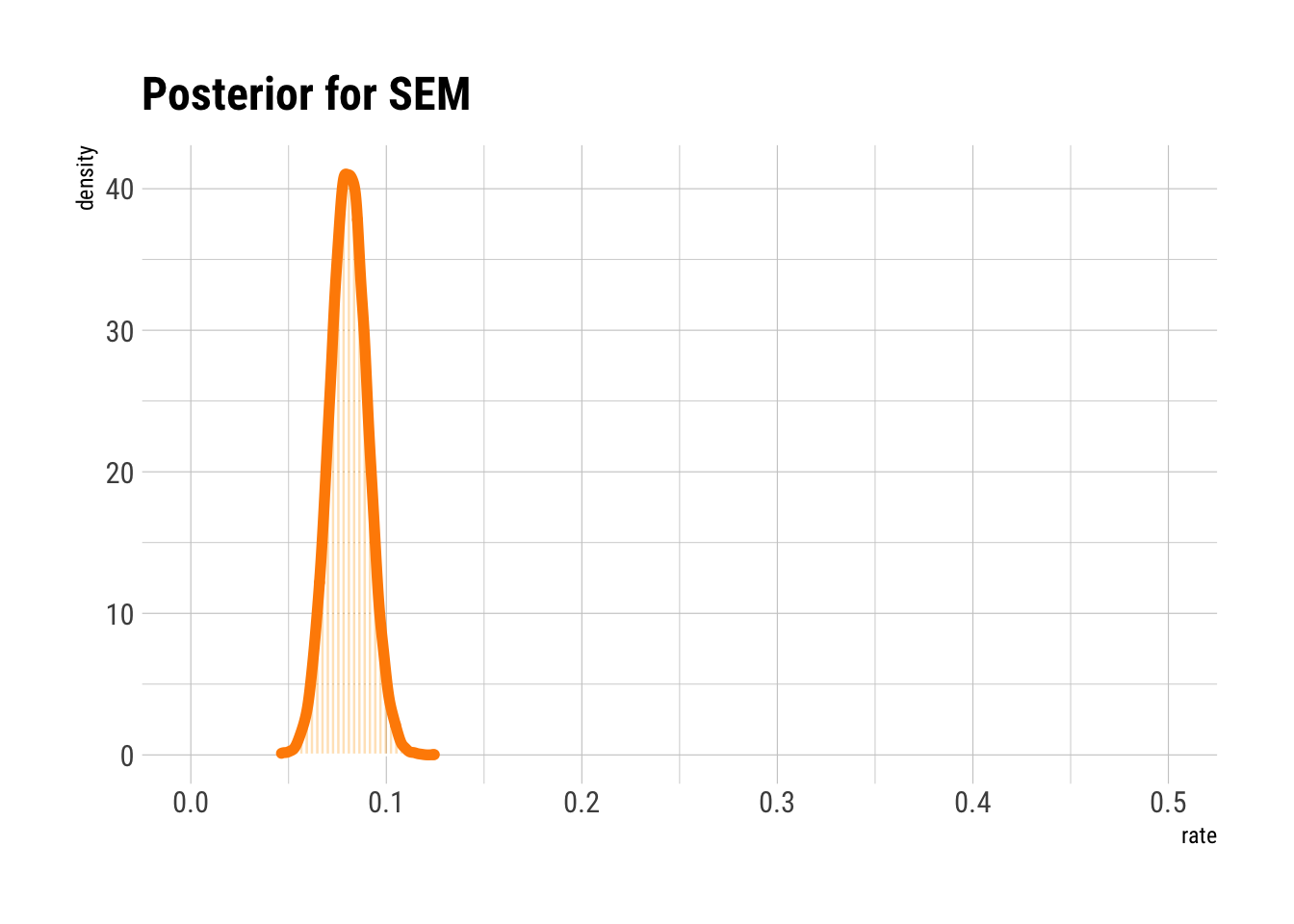
sem_posterior <-
sem_prior |>
filter(convert == sem_converts) |>
pull(rate)
mean(sem_posterior)## [1] 0.08076218df <- tibble(
ad_converts = rbinom(n = n_samples, size = ads_shown, prob = posterior),
sem_converts = rbinom(n = n_samples, size = sem_impressions, prob = sem_posterior),
ad_cost = ad_converts * 500,
sem_cost = sem_converts * 400,
cost_diff = ad_cost - sem_cost
)
df |>
ggplot(aes(cost_diff)) +
geom_histogram(bins = 30, fill = "cyan", col = "black", alpha = 0.3) +
geom_vline(xintercept = 0, lty = 4, col = "red") +
scale_x_continuous(labels = scales::dollar) +
scale_y_comma() +
labs(x = "Cost Diff. (Ads - SEM)", title = "Compare Ads to SEM")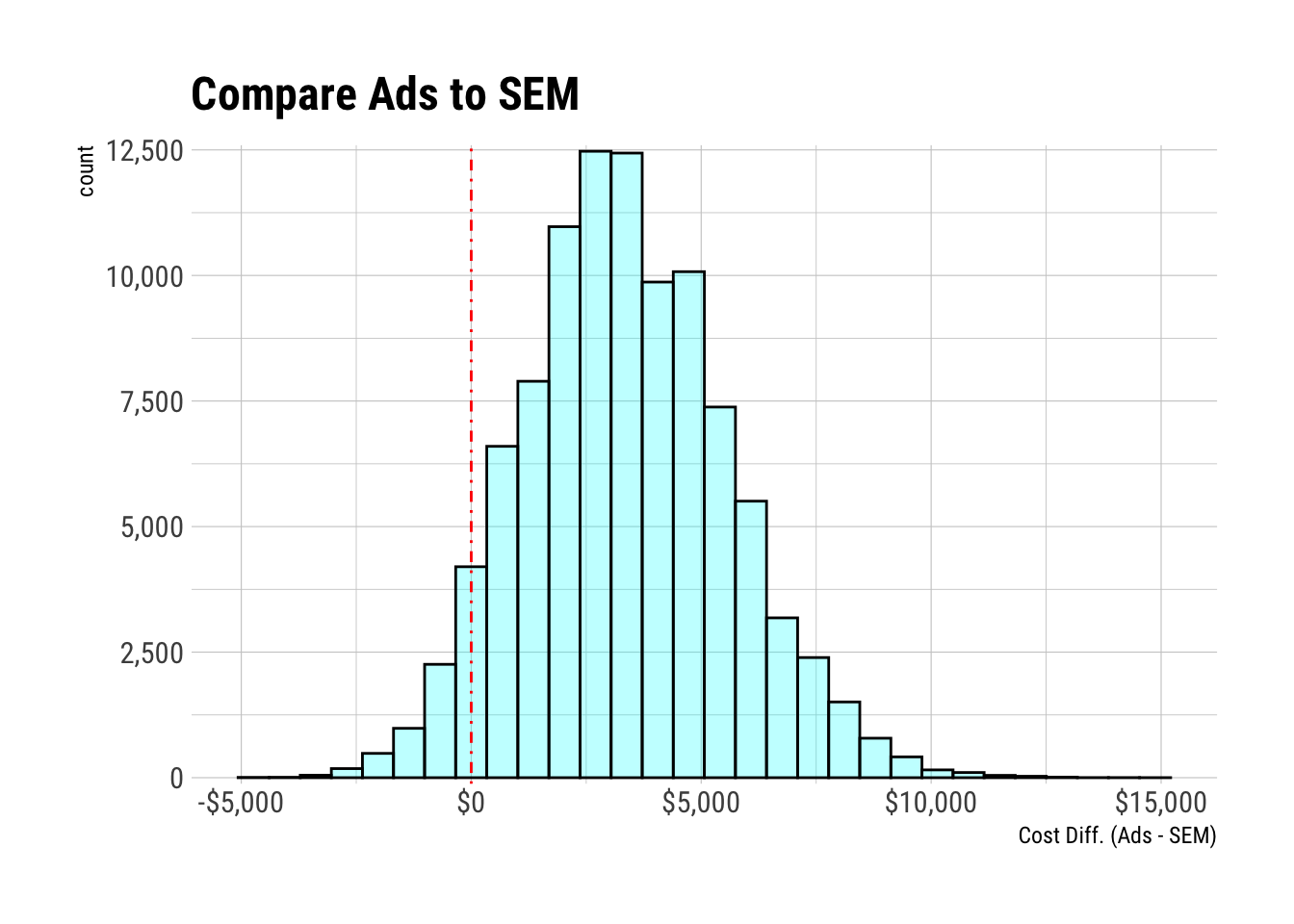
# prob of ads is better
df |> summarise(prob = sum(cost_diff < 0) / n())## # A tibble: 1 × 1
## prob
## <dbl>
## 1 0.0551Shortcut to Bayesian Calculation
Use density d instead of drawing samples r.
calc <- tibble(
prop_clicks = seq(0, .3, by = 0.01),
prior = dbeta(prop_clicks, shape1 = ab$a, shape2 = ab$b),
likelihood = dbinom(conversion, size = ads_shown, prob = prop_clicks),
prob = prior * likelihood
) |>
mutate(prob = prob / sum(prob))
calc |>
ggplot(aes(prop_clicks, prob)) +
geom_col(col = "white", fill = "cyan") +
geom_line(col = "dark blue", size = 1.1) +
coord_cartesian(xlim = c(0, .5)) +
labs(title = "Alternate Bayesian Calc.")